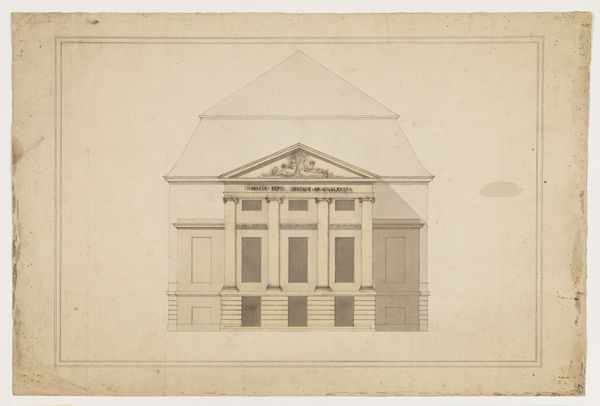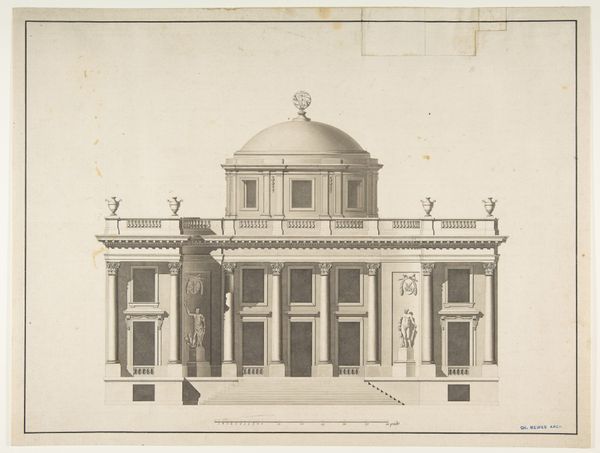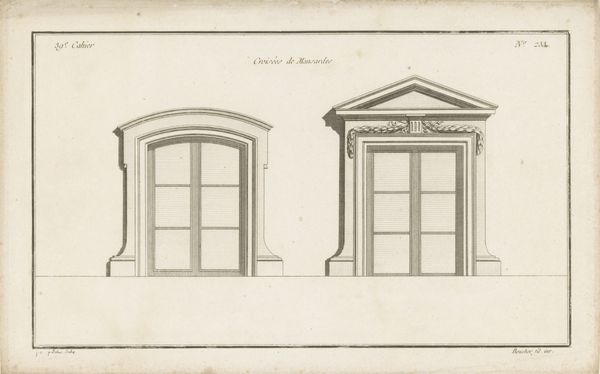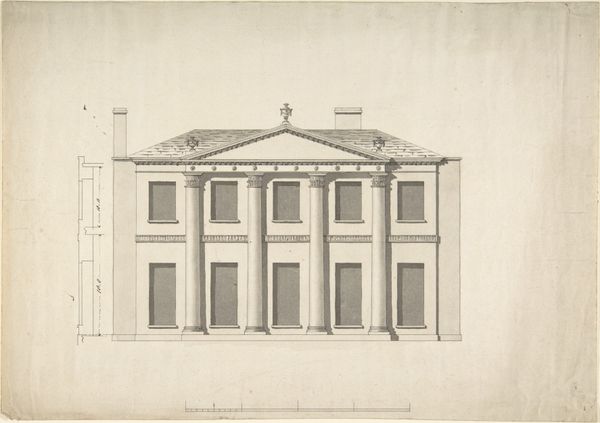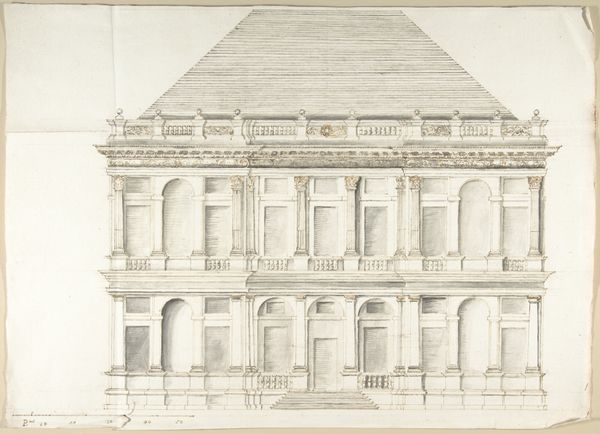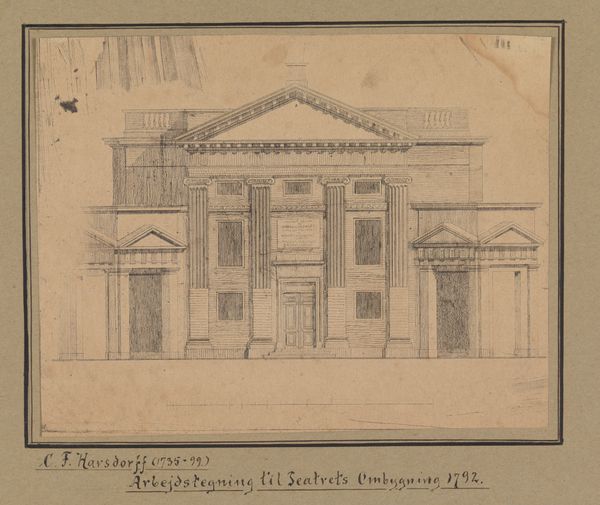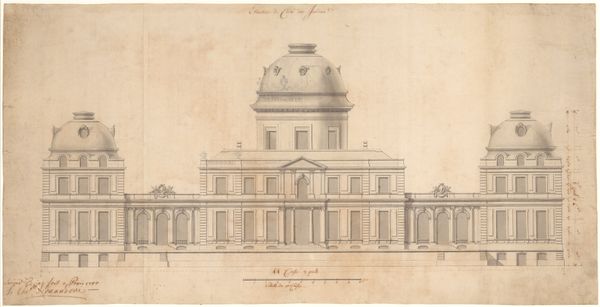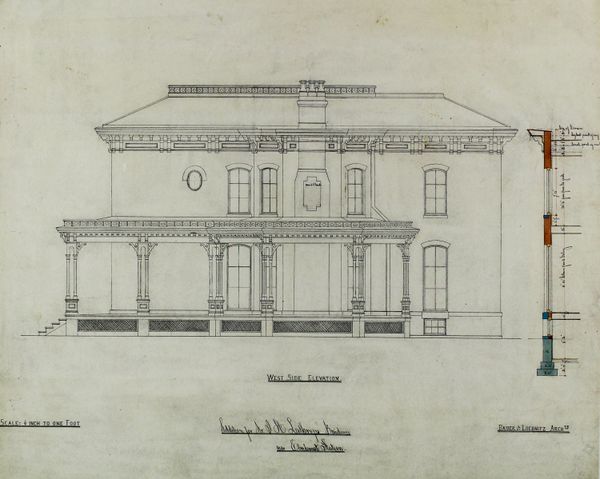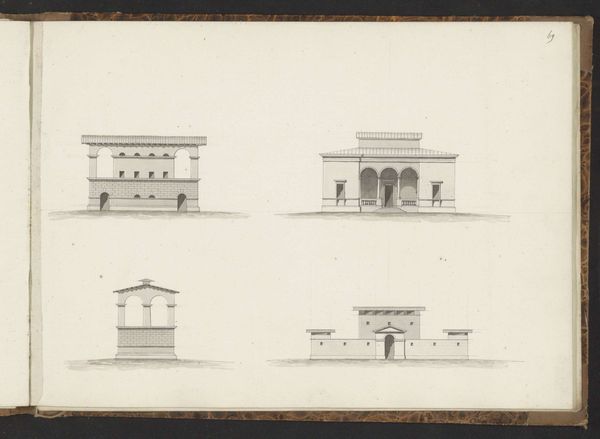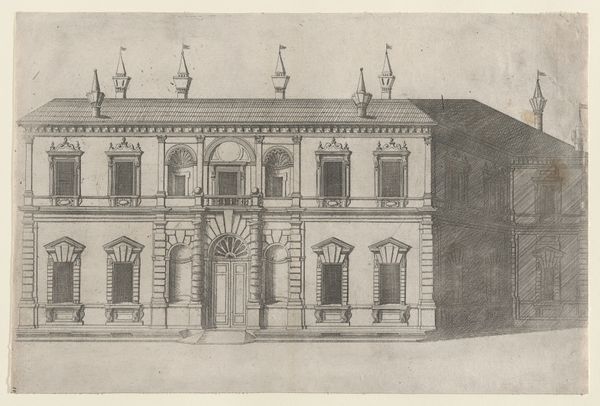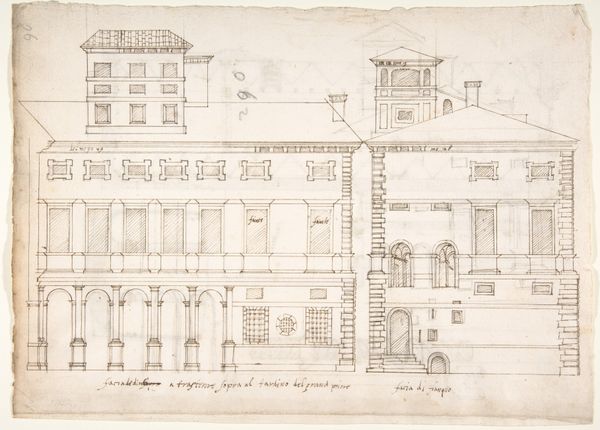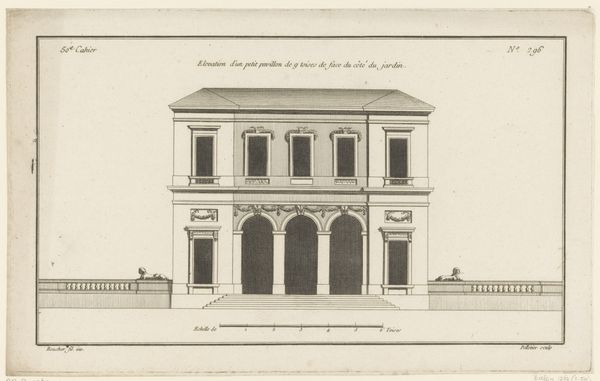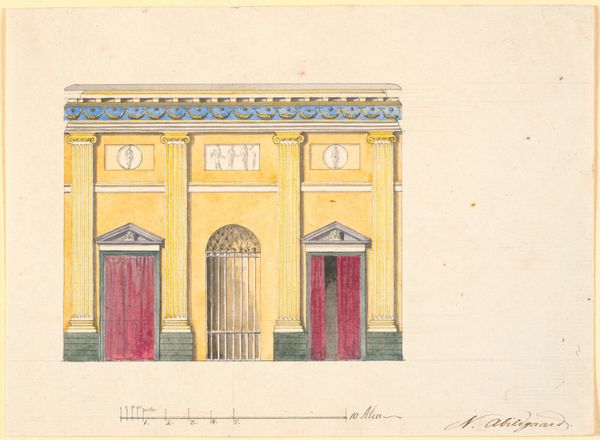
Architectural Design for Exterior of City House 19th century
0:00
0:00
drawing, print, architecture
#
drawing
#
neoclacissism
# print
#
geometric
#
architecture
Dimensions: 7 1/16 x 9 5/8 in. (17.9 x 24.4 cm)
Copyright: Public Domain
Editor: This is an architectural design from the 19th century, "Architectural Design for Exterior of City House," made with drawing and print. It looks so formal, almost severe. What can you tell us about it? Curator: This architectural drawing speaks volumes about the visual language of power and aspiration in the 19th century. The clear neoclassical lines, the emphasis on symmetry, and the repetition of columns -- what do they evoke for you? Editor: I guess I see a kind of cold perfection, a statement of order. Is that related to the cultural meaning of the building itself? Curator: Exactly. Neoclassicism consciously draws on the visual vocabulary of ancient Greece and Rome. Columns, triangular pediments – they're potent symbols. In ancient Greece, columns supported temples, embodiments of wisdom. In Republican Rome, these forms appeared in government buildings. Editor: So, using those same shapes, this building is supposed to feel powerful and authoritative? Curator: Yes, it aimed to create an aura of permanence, reason, and civic virtue. Note the precise geometry – the circle above the doorway, the unwavering verticality of the columns. Buildings like these sought to shape not only physical space, but the very minds of the people who inhabited and beheld them. These details connect this structure to a longer historical narrative of civic governance and even imperial might. The scale and materials would also impact those perceiving it. Editor: Wow, I hadn't considered how all those elements work together to communicate status. Curator: Architectural symbols are like embedded cultural narratives; it prompts a powerful reading and immediate association with what those architectural forms have come to represent. Editor: I'll definitely think differently about buildings now, noticing what they're "saying". Curator: It is a language that persists today!
Comments
No comments
Be the first to comment and join the conversation on the ultimate creative platform.
